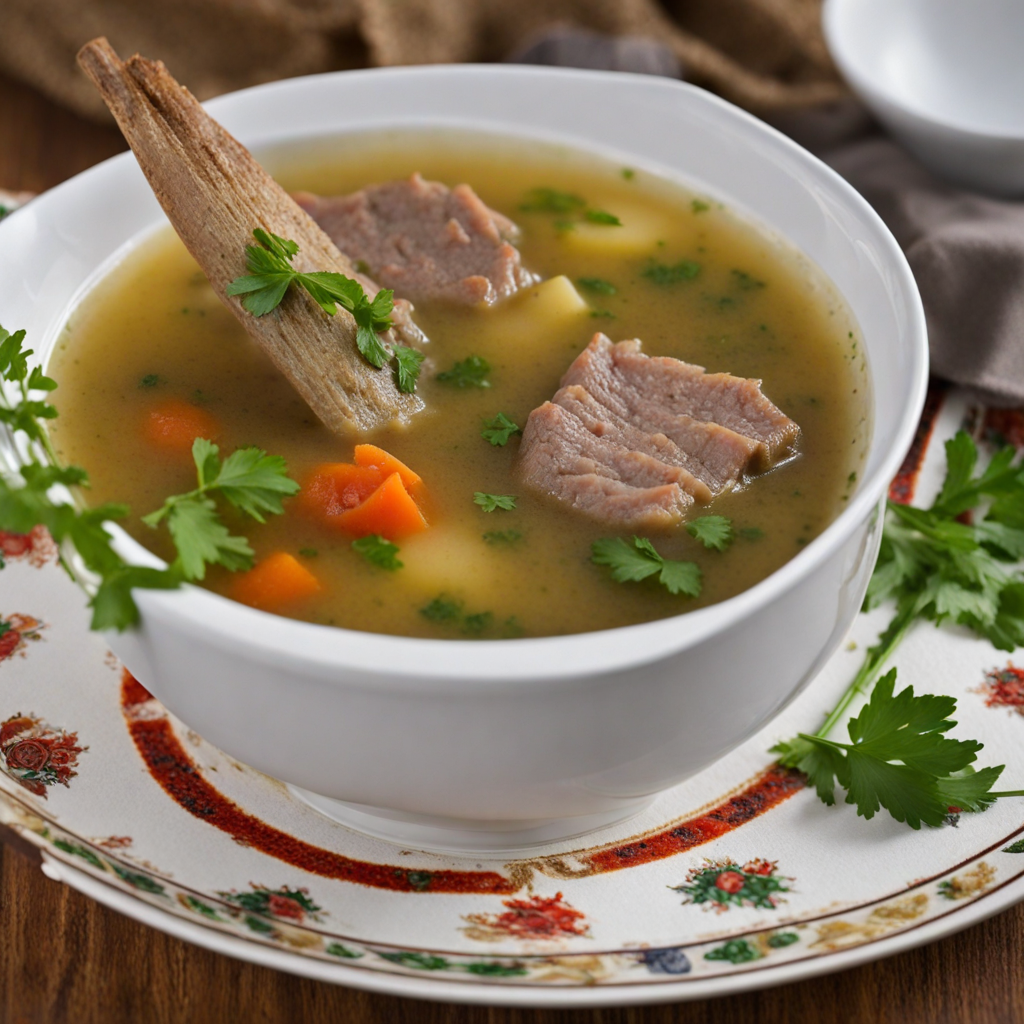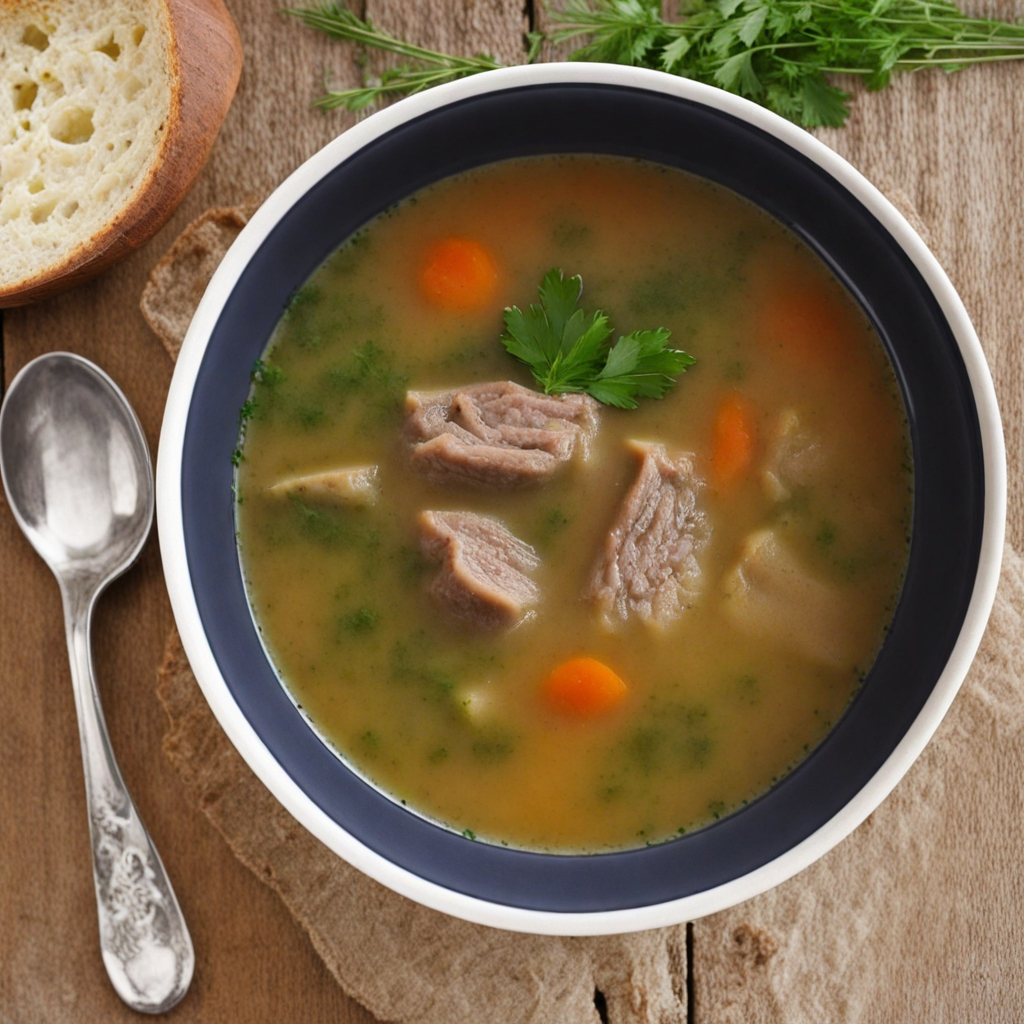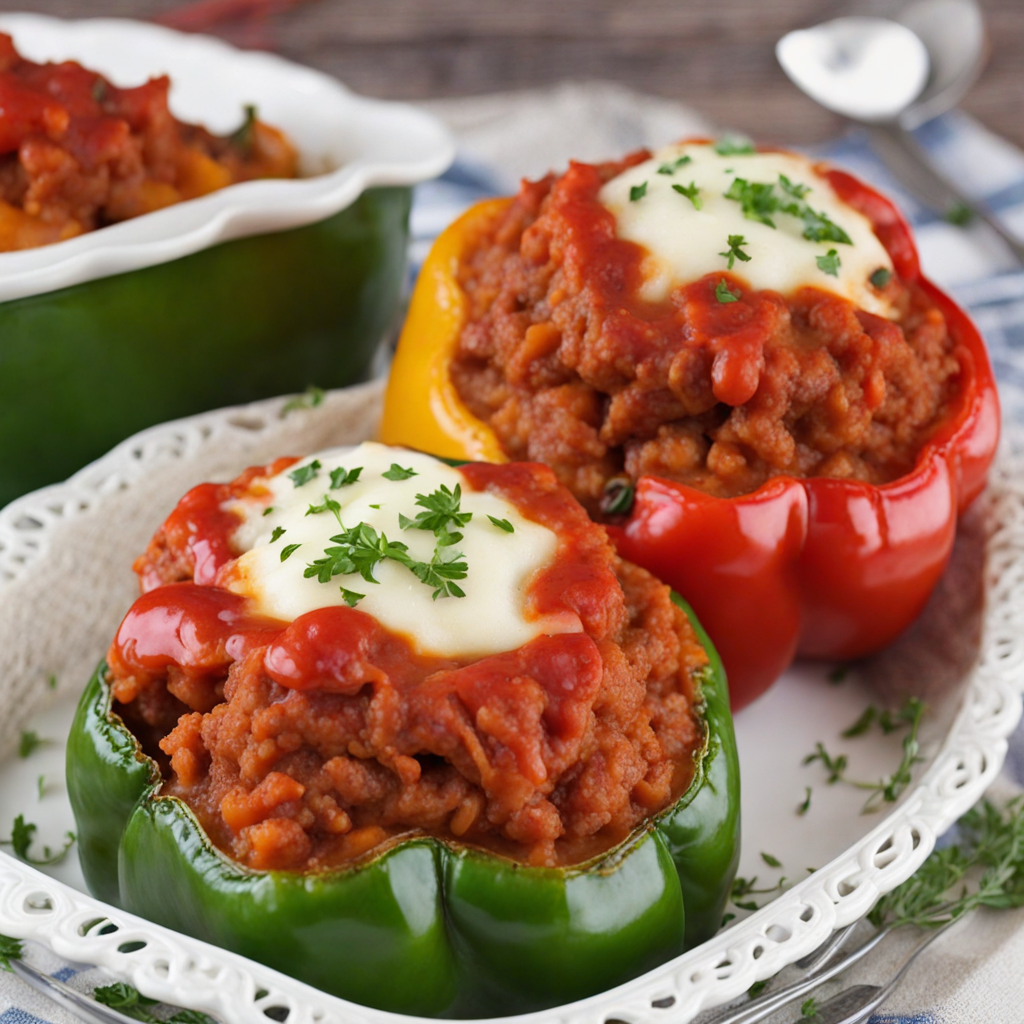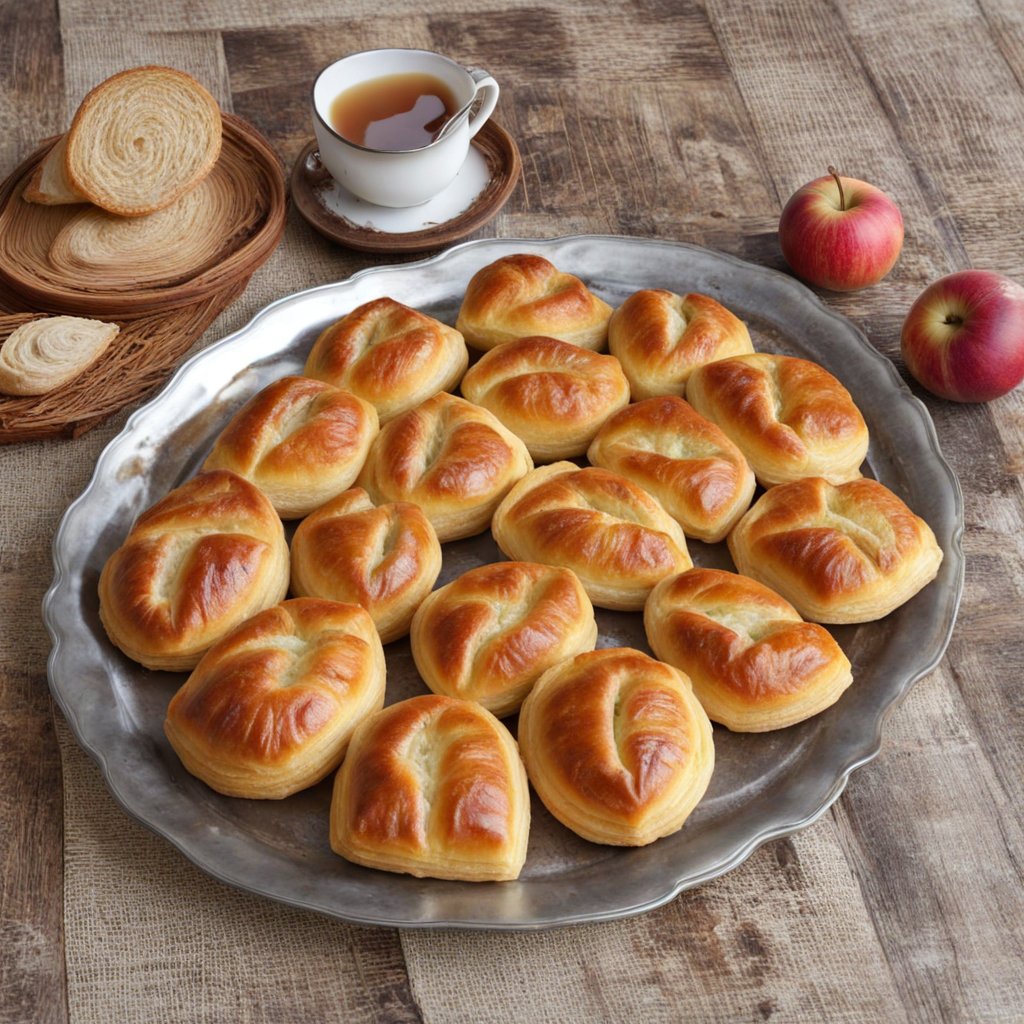Lamb Soup
Lamb Soup, or "Ciorbă de Miel," is a traditional Romanian dish that embodies the rich flavors and hearty ingredients characteristic of Eastern European cuisine. This flavorful soup is typically made with tender pieces of lamb simmered to perfection, allowing the meat's natural juices to infuse the broth. The use of fresh herbs, particularly dill and parsley, adds a fragrant aroma and a vibrant pop of flavor that elevates the dish. Root vegetables such as carrots, parsnips, and potatoes are often included, bringing a subtle sweetness and earthy depth that complements the savory lamb. The soup is usually finished with a splash of sour cream or a dash of vinegar, giving it a delightful tang that balances the richness of the meat. As the soup simmers, the combination of ingredients creates a comforting and warming dish that is perfect for cold weather or festive gatherings. Each bowl is a celebration of local produce and traditional cooking methods, often passed down through generations. The broth is light yet hearty, making it a satisfying meal on its own or served alongside crusty bread for dipping. The vibrant colors of the fresh vegetables and herbs make the presentation visually appealing, inviting you to indulge in this beloved Romanian specialty. Lamb Soup reflects the spirit of Romanian hospitality, often served during family gatherings and special occasions. Each region may have its own variation, with different spices or additional ingredients, such as beans or rice, adding unique twists to the classic recipe. This dish not only warms the body but also nourishes the soul, offering a taste of Romanian culture and tradition in every spoonful. Whether enjoyed at a local eatery or prepared at home, Lamb Soup promises a delightful culinary experience that transports you to the heart of Romania.
How It Became This Dish
Ciorbă de Miel: A Culinary Tradition of Romania Ciorbă de miel, or lamb soup, is a beloved dish in Romanian cuisine, emblematic of the nation's culinary heritage and its deep-rooted agricultural traditions. This hearty soup, characterized by its tangy flavor, is a staple during springtime festivals and is particularly popular around Easter, symbolizing renewal and the arrival of warmer months. The history of ciorbă de miel not only reflects the agricultural practices of the region but also showcases the cultural influences that have shaped Romanian food. #### Origins and Ingredients The origins of ciorbă de miel can be traced back to the pastoral lifestyle of the Romanian people, particularly in the regions of Transylvania, Moldova, and Dobrogea, where sheep farming has been a significant aspect of rural life for centuries. The dish is primarily made from lamb, which has historically been a common source of meat in Romania, especially in the spring when lambs are born. The use of lamb in cooking is deeply rooted in the traditions of the Orthodox Christian community, where the lamb symbolizes sacrifice and renewal. Ciorbă de miel traditionally includes a variety of fresh ingredients, such as lamb meat, vegetables like carrots, onions, and celery, and is seasoned with a unique blend of herbs. One of the defining characteristics of ciorbă is its sourness, which is typically achieved by adding fermented wheat bran (borș), lemon juice, or vinegar. This sour element sets ciorbă apart from other soups and is a hallmark of Romanian cuisine, reflecting the local taste preferences. #### Cultural Significance Ciorbă de miel holds a special place in Romanian culture, particularly during the Easter celebrations. Easter is the most important religious holiday in Romania, and lamb plays a critical role in the festivities. The preparation of ciorbă de miel is often a communal activity, with families gathering to prepare the dish as part of the Easter feast. This practice fosters a sense of togetherness and continuity, as generations pass down the recipes and traditions associated with this dish. Additionally, ciorbă de miel is often served alongside other traditional dishes, such as cozonac (a sweet bread), drob (a type of lamb haggis), and various pickled vegetables, creating a feast that celebrates the richness of Romanian culinary heritage. The dish not only nourishes the body but also serves as a symbol of hospitality and the joy of gathering with loved ones. #### Historical Development Historically, the evolution of ciorbă de miel reflects broader changes in Romanian society and its culinary practices. The word "ciorbă" itself is derived from the Turkish word "çorba," which highlights the influence of Ottoman cuisine on Romanian food. The Ottomans ruled parts of Romania for several centuries, and their culinary techniques and flavors significantly impacted local cooking styles. The introduction of sour soups, a hallmark of both Turkish and Romanian cuisines, can be traced back to this period. In the 19th century, as Romania began to modernize and urbanize, the ingredients and methods used to prepare ciorbă de miel evolved. The rise of cities led to the establishment of restaurants and eateries where traditional dishes were adapted to suit urban tastes. Chefs began experimenting with flavors and presentation, while still paying homage to the original recipes. This period also saw the introduction of local herbs and spices that enhanced the dish's flavor profile. In the 20th century, ciorbă de miel became more than just a dish; it became a symbol of national identity. During the communist era, when Romania was under a strict regime, traditional foods like ciorbă de miel were celebrated as markers of cultural heritage. Food festivals and culinary competitions showcased regional dishes, reinforcing the importance of preserving culinary traditions. This period also saw a resurgence in interest in traditional farming practices, leading to a renewed appreciation for local ingredients and seasonal cooking. #### Modern Interpretations Today, ciorbă de miel continues to evolve while remaining true to its roots. Modern chefs are experimenting with the dish, incorporating contemporary culinary techniques and global influences. Some chefs have begun to introduce alternative proteins, such as goat or even plant-based substitutes, in response to changing dietary preferences. Additionally, fusion versions of ciorbă de miel can be found, blending traditional Romanian flavors with international cuisines, reflecting the globalization of the culinary world. Despite these modern adaptations, the essence of ciorbă de miel remains unchanged. The dish is still a staple during Easter and other family gatherings, embodying the spirit of Romanian hospitality. Home cooks continue to prepare ciorbă de miel in their kitchens, often relying on family recipes passed down through generations. The act of making ciorbă de miel is not just about the food; it is about the memories, the stories, and the connections forged around the dining table. #### Conclusion Ciorbă de miel is more than just a dish; it is a testament to Romania's rich culinary heritage, showcasing the influence of historical events, cultural traditions, and regional flavors. Its evolution over time reflects the resilience of traditional practices in the face of modernization and globalization. Today, ciorbă de miel stands as a beloved symbol of Romanian culture, a dish that brings families together, nourishes the spirit, and celebrates the joy of communal dining. As it continues to adapt and thrive, ciorbă de miel remains a cherished part of Romania's culinary landscape, inviting both locals and visitors to experience the warmth and richness of Romanian hospitality.
You may like
Discover local flavors from Romania







